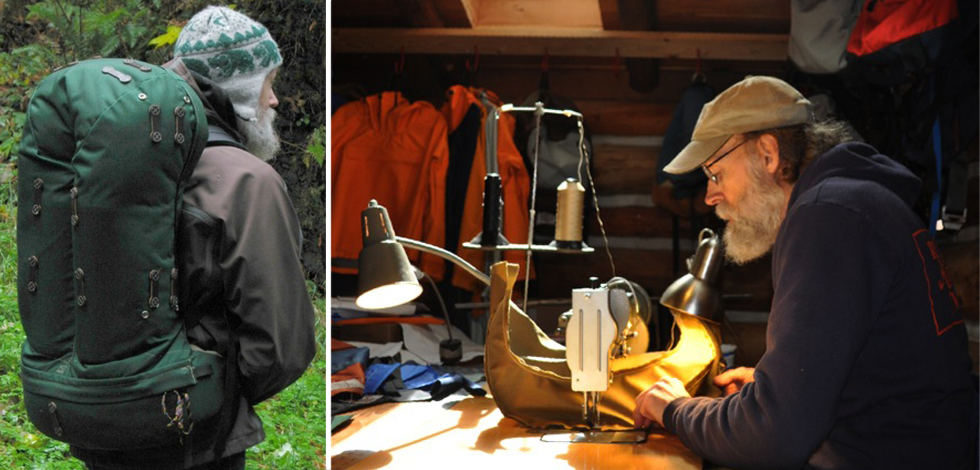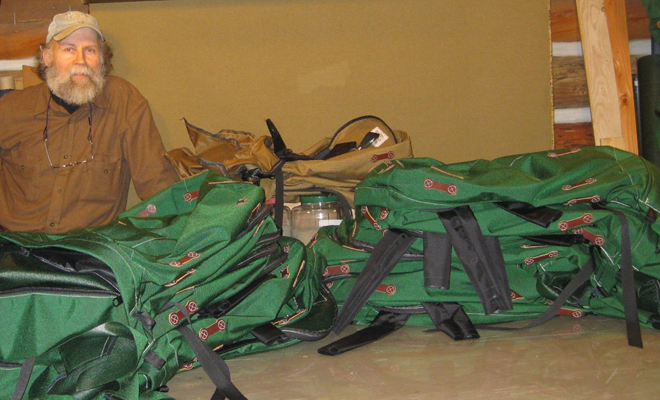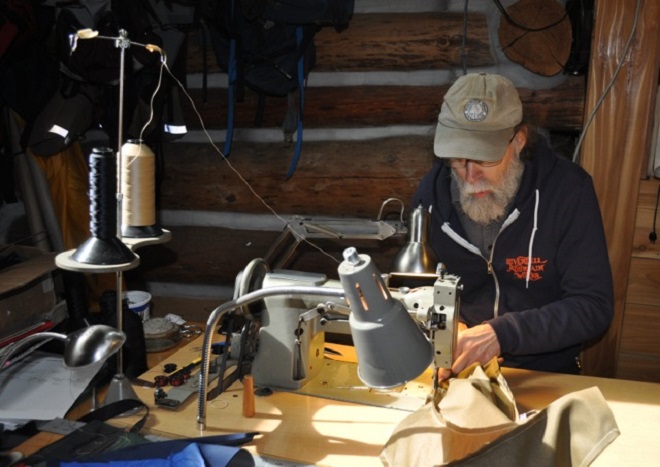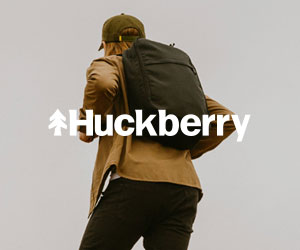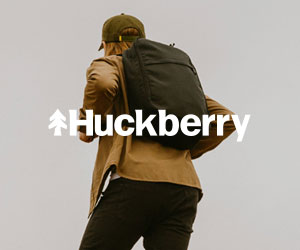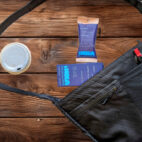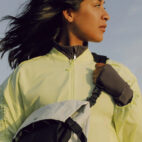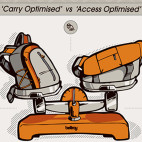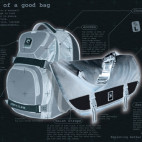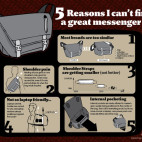Cult Bags :: The Revival of the Jensen
Rivendell Mountain Works is inextricably linked with a legend among bags – the Jensen Pack. However, whether the brand and the backpack would still be around today without the dedication and passion of Eric Hardee is impossible to say. The original RMW ceased business in the early 80’s but – be it serendipity or fate – an unexpected meeting Eric was to have put him on a path to helping preserve and revive one of the most distinctive pack designs in carry history. Understandably, we were eager to find out more from the man himself…
How did you get involved in Rivendell Mountain Works?
Well going back to my college days, there weren’t a lot of brands on the market, only a few. There were, at that point in time, just half a dozen or so other brands. So their stuff turned up in small numbers. Amongst our college outdoor group the Jensen Pack turned up and that fascinated us. We heard about the Bombshelter Tent. It wasn’t until a little later that I actually disposed of my frame pack and went for a Jensen Pack. At that point, I was working in the park service and packs that were a little more appropriate were sort of the focus. So I started using the Jensen Pack. I guess I happened to be one of the people who had the right personality for it because it’s a bag that requires careful packing. To get it to perform the way it should, you have to spend some time packing it right.
What’s important with regards to packing a Jensen?
Balance. You have to have a good sense of how to pack it so that it’s equally loaded on both sides. Because you know, it’s separated into two tubes. You can’t be completely flagrantly oblivious to what you’re shoving in there.
A lot of people don’t want to be bothered doing that. It’s just a personality thing. Everybody has their reasons that they like a particular pack. I think that’s the important reason that there’s so many packs on the market. Because packs are like people and their personality; finding the one that really fits you and suits your whole aesthetics and everything is kind of what it’s all about. I mean, all the things that I used before it became obsolete.
When I started doing this commercially, I was sort of skeptical that there were other people like myself. But there have been enough people – because the world is big enough, I guess, that there are enough people in each population to sustain just about anything.
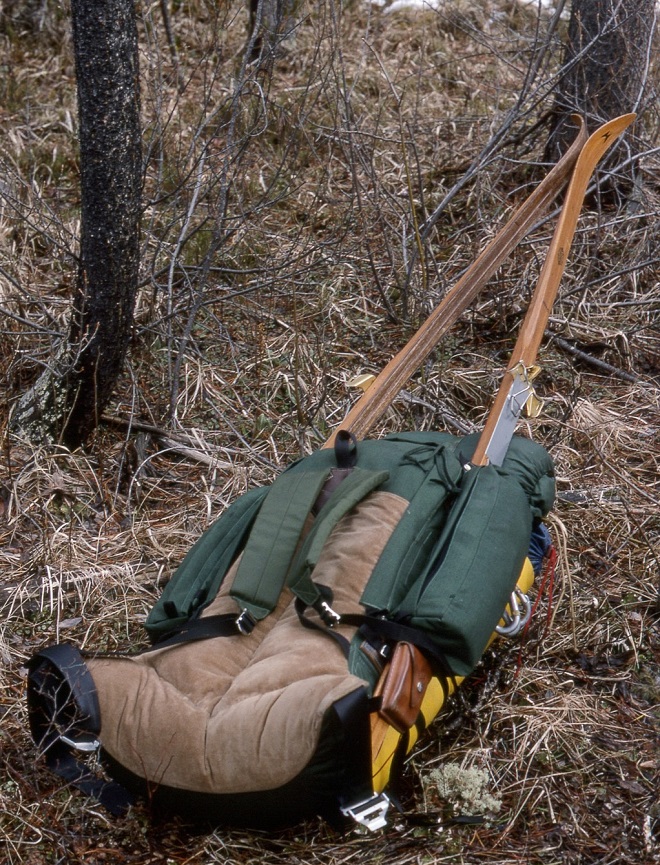
Did you approach Rivendell to keep building the product when production seized?
What happened was the original Rivendell went out of business in 1981. The assets were acquired by Don Wittenberger, who was partnered with the Yak Works. I found that out just by frequenting the Yak Works store. Then all of a sudden, Rivendell appeared there. I knew they were out of business and there was a year or two lag. I knew that because I actually tore my original Jensen apart, and made a new one after I wore it out because they were out of business and I couldn’t just buy one. And so during that period I made one. Then the Yak Works had them in their catalogue, and that window of time didn’t last for long before Don split off from the Yak Works.
It was a completely random event where I crossed paths with Don. It’s one of those stories of just being in the right place at the right time. I just happened to be there when he was in the process of splitting off from the Yak Works. I didn’t even know who he was, but there was this dude loading a sewing machine into the back of his Subaru. And I was like “Huh…” I was sort of compelled to go over and introduce myself and ask him who he was and it turned out he was the partner who was splitting off and taking the Rivendell stuff with him. I sort of offered to make them. And that’s how it began, it was pretty inauspicious.
Were you only making Jensens at the time?
Yeah. That was really all I was interested in doing. My interest was in keeping the design alive because it’s such an unusual design. All of the copies that sprung up back in the 70’s and early 80’s of the Jensen pretty much vanished. And so I felt that I wanted to keep the design alive because it was so unusual and specialized.
When did you start branching out to some of the other Rivendell products that exist today?
When I switched to making this my full-time occupation, I instantly knew that I needed to have more products in order to make it a viable business. And fortunately, Rivendell had earlier products, but with the exception of the tent, I’ve never seen any of them. They were pretty rare. But anyway, that was the key thing – there had to be more than one pack to make it viable. Don was all for me continuing to bring the line back. So I just sort of chipped away and brought things back that were appropriate to bring back.
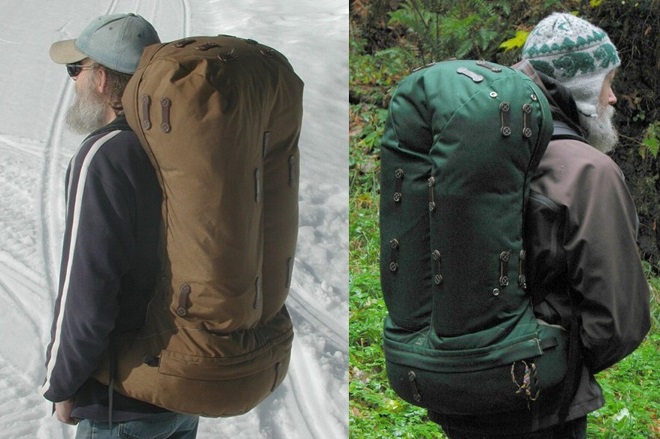
Did he have patterns for all of these?
Yeah, in some form. We did have some existing patterns. There were a few things that we couldn’t find. They had, during the very last years, started to make a waist pack. I couldn’t find a pattern for it and I ended up just designing one that fit in very nicely with the rest of the brand, but most of the larger packs had patterns in some form.
So Rivendell packs are still cut and sewn in the “old way”. Tell us about your process.
It’s an evolution of the fact that if you use something that you are impressed by thanks to its longevity and how well it holds together, there’s not a compelling reason to screw with the way it’s made. Just like, “I know this is gonna hold together.” So sure, there are newer materials and newer methods of construction. But it’s like okay, we know this is gonna work. And I was surprised to learn that people were actually interested in that, that was a market. That was a surprise for me, a complete surprise. You know, the whole retro aesthetic.
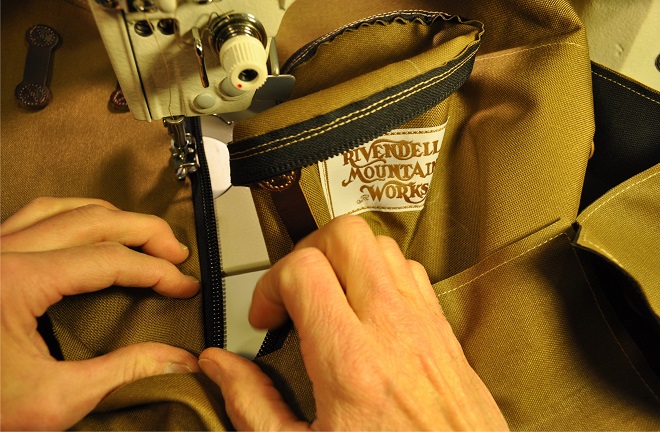
The product is “period” in a sense – from the way it’s stitched to the way it’s cut out, to the patterns.
The other thing I guess was true of the original Rivendell line, compared to a lot of other packs at the time, was that Larry Horton went out of his way to design things that used as few pieces as possible. It might be a little more expensive to make one because there is more waste in cutting out the product, especially when you have a weird shape that you’re trying to make come together as one piece. But that was a choice of his – to have few seams. Which is logical in terms of performance, in terms of durability and weatherproofness. These two things were and still are a factor, although they are not the end story.
That was true of all the packs that he made and he also made them “genetically” related. The Jensen pack especially wraps your hips, you feel it come around and it’s padded by what you put in it. But all the packs have that characteristic to a different degree. Nothing else looks quite like they do. They’re all unusual designs.
There are some manufacturers who used to hot cut their products. And I think that might have been actually before there was seam tape and binding tape at all. I don’t even know if those existed as a stock thing off the shelf in the 70’s. I’ve never been able to accurately determine if in fact they were hot cutting the Jensen packs in the original Rivendell. I can’t say for certain because I had conflicting information on that. However, I don’t know why you would make your patterns out of masonite material if you were stack cutting. There’s no logical explanation for that. I think probably what happened was that they started off in some period hot cutting packs and then ended up using the Masonite patterns to mark the stacks and then cut because it was faster and more economical.
But I started hot cutting because otherwise you would have to bind seams. And a lot of those seams would be very difficult to bind because there is this long curving seam and the bindings would be a big-time consumer cost. And so, I’ve disputed since we have the rigid patterns necessary for doing hot cutting. I’ve used Masonite, as a material choice it’s perfect. So I just stayed with that philosophy.
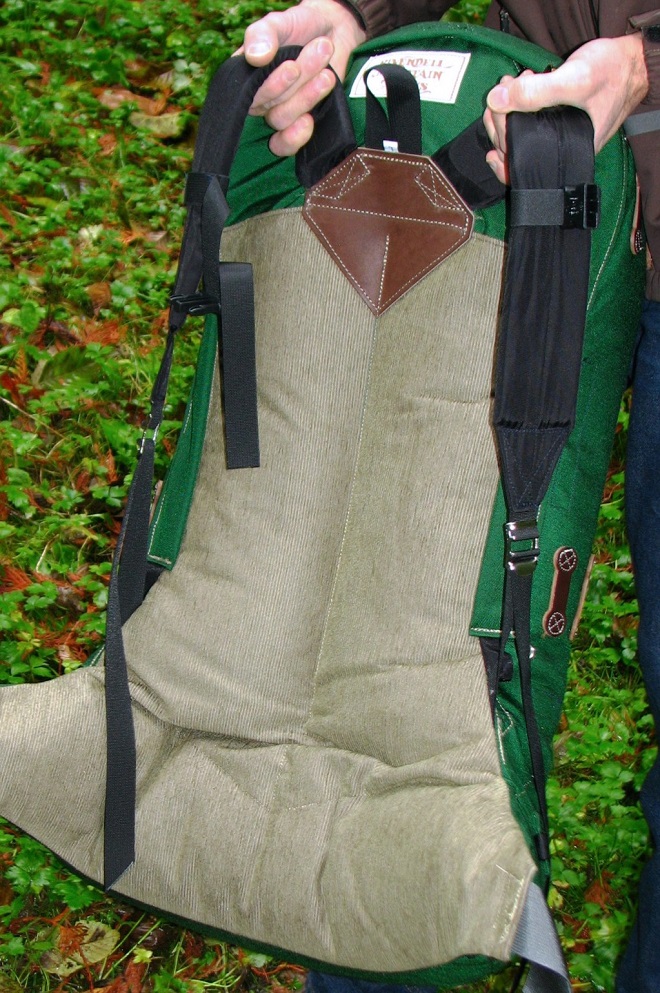
As you continue to grow your products more and more overseas and really capture the attention of markets in Japan and Korea, do you feel pressured to change the manufacturing style of cutting them out one at a time? Will that change in the future?
It’s possible that it could change. Sure, I feel that pressure just like anybody would because it’s really hard to increase your volume and decrease your cost per item without doing it differently. It’s very labor intensive. If I have really reliable access to information, I would know what to do because I don’t really know how important the hot cutting is to some of the export market – I really have no way to know that. No one’s ever told me, “Oh this is one of the reasons we like your packs.” I sort of wonder if they even know; if they even care. I think there’s a number of factors why the product is attractive in the Asian market but whether hot cutting is a significant part of that or not, I have no idea. If it isn’t, I’ll be a fool not to dispose of it because it is really expensive to do it that way!
You’ve seen a good amount of imitators, what do you think about people lifting Rivendell’s designs?
It’s flattering. I think it’s kind of funny in a way because the things that are really important in the meticulous parts of the construction that are really, really significant aren’t necessarily lifted. You know, like seeing somebody used the barbell leather, that’s a real style point – but it doesn’t have anything to do with the construction of the pack. It does have to do with the functionality of the tie-on-point. That was probably the single biggest breakthrough that Larry Horton made in the 70’s, was changing from using rectangles and squares to designing the barbell because he uses less material, it’s lighter, easier to thread, and stronger for its weight than any previous systems. It’s brilliant and it’s completely unusual. Nobody else had it. So, style points, functionality, cheaper, everything. Don Jensen designed the pack, Larry Horton refined the design. Larry Horton was able to put it in production, which was no small task, but he didn’t design it. He did design the barbell leathers and I’ve always thought that was the most significant contribution he made. It’s really cool to see that now copied a little bit. People are mostly just looking at the superficial work and borrowing ideas.
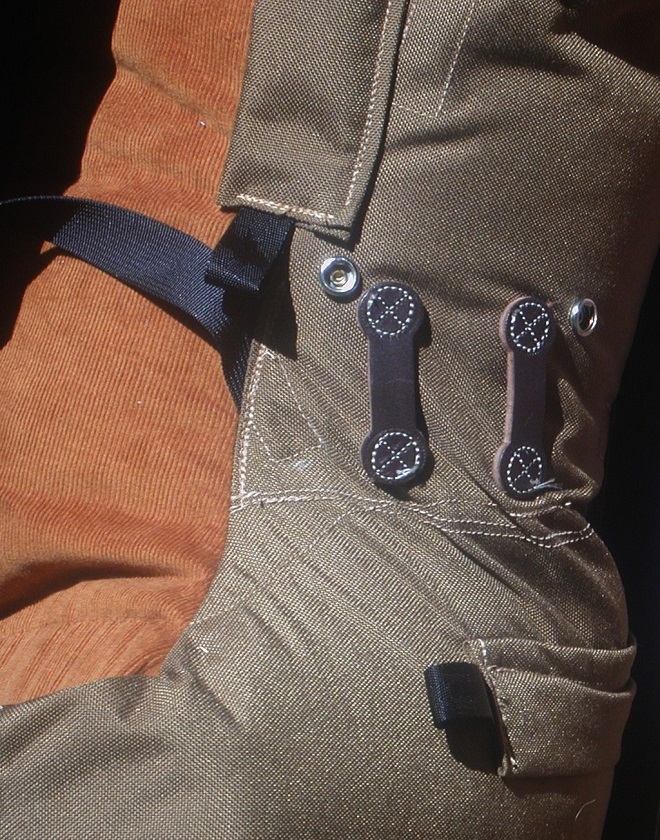
What’s your personal contribution to the Rivendell brand?
I would say putting a high priority on keeping the US-made aspect, and keeping the quality as high as I can. I am continuing the philosophy of cottage manufacturing of the original Rivendell. They had a small factory in Victor, Idaho. It was just a one-room thing. I don’t know how many people worked there – maybe half a dozen, maybe a little more. But the tents were entirely made by one seamstress offsite. So they were a cottage manufacturer in a literal sense. That’s the model. They didn’t have a lot of other stuff being made offsite. We’re doing everything in a decentralized process even more so than before. So keeping a US-made cottage industry model and also keeping with the philosophy of the simplification of design. Keeping the packs really basic and stripped down, I’ve been really surprised and glad that there seems to be enough of a market out there to support that.
How do you decide when you’re going to re-release a new Rivendell product or “new-old Rivendell product”?
The raingear is a big leap that we’ve been working on for months and months and months. And it’s a leap for me because I’ve been nothing more than a pack maker as far as commercial goods goes. It’s a huge different world when we try to actually put something into production. We’re doing a pre-production run now of the cagoules, so we’re off and running. But again, that’s another great example of a product that’s unusual that was manufactured only in limited numbers by very few manufacturers in each product. Sort of ties in right with the whole philosophy.
You collaborated with Matt Singer (One Million Trees) in New York City. Do you intend to do more collaboration with other brands in the future?
Yeah, I like that. It’s fun. It’s fun to do. And I have a couple of other possibilities in the works; the problem is trying to work with such a small production capability, trying to work that into the schedule is challenging.
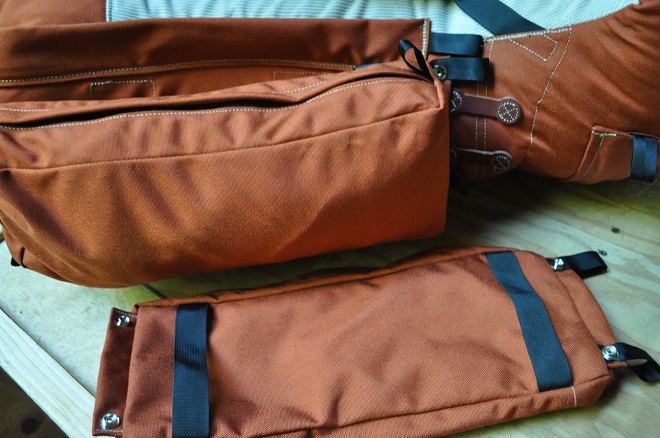
Yeah. You’re the busiest person I think I’ve ever met. And this is your sort of retirement plan?
Not a great plan. Don’t try this at home.
Not common to be more busy after you retire than before.
Yeah, right!
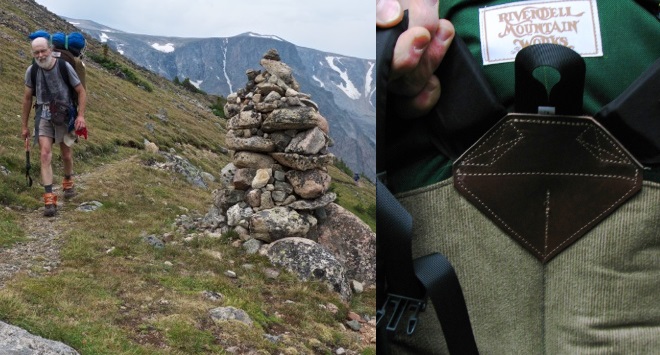
You mentioned that you worked for the National Park Service. Tell us more about that.
Well, I had the honor of working for about 15 or so seasons as a backcountry and climbing ranger, working for about four different National Parks and it was just an awesome experience. Really, I feel very lucky to have been a part of that. I really believe that it’s much more difficult to get into these days. And when I’m looking back, I really feel that for me and the people I knew at that time working for the park service, it was sort of the glory days of seasonal work. We were really lucky. We were just the generation during the right time that were able to dovetail with that really incredible experience.
You live off the grid, and you sew there too? Where are you getting all the power?
We get creative! I started on a treadle sewing machine, which I’m sure comes as no surprise to you. The fact that I’m doing what I’m doing out there is just one of the crazier elements. It’s extremely challenging because I never envisioned trying to use alternative energy. We are using solar and I have plans to do some small-scale hydro, we use a generator too and sort of patch it all together as best we can to keep our power footprint low. But again, it’s challenging.
I bet. How has 2014 been for Rivendell?
Off to a good start. I’m excited about the raingear. It’s really been dragging me down just because of the whole process of getting it going. It’s just taking way longer than I thought and it’s expensive to do. I am still not really sure the market is there enough to even support it at a low level. But I’m excited to finally be doing it. It’s taken a long time to get here.
It’s a huge change because really we’ve been only offering packs. So getting back into the raingear that they were offering back in the late 70’s is a pivotal point for the new Rivendell.
What bags do you carry daily? What are your favorites?
I love Michael Green’s bags. I was carrying the Rivendell Mariposa as my go-to pack for three years straight. I used it every day, for everything. And part of it was just wanting to use the hell out of it. If you start making a new product, you always have this lingering “Okay, just how long is this thing going to last? How is it going to hold up? I better use it, so I can walk the talk,” narrative in my head. And after using it for three years, except for the fact that it’s faded a little in the UV, it’s pretty bomber. So, that’s what R&D should do in every company with product.





 Carry Awards
Carry Awards Insights
Insights Liking
Liking Projects
Projects Interviews
Interviews
